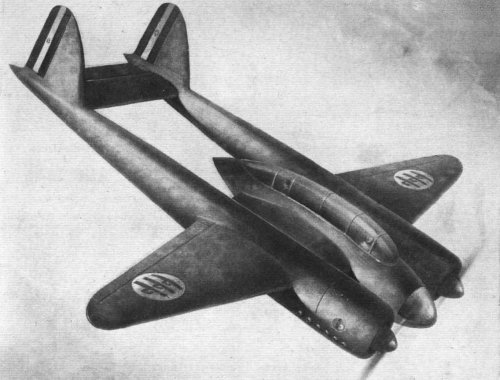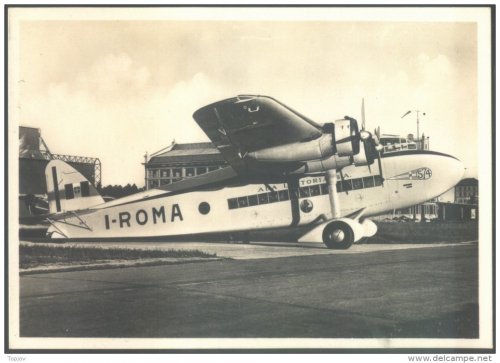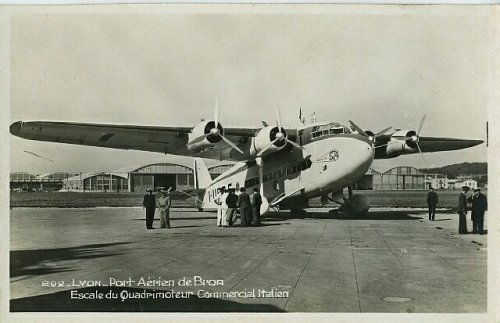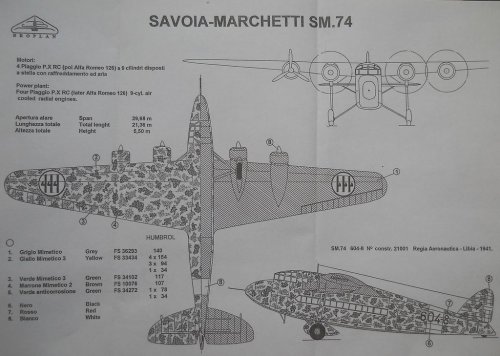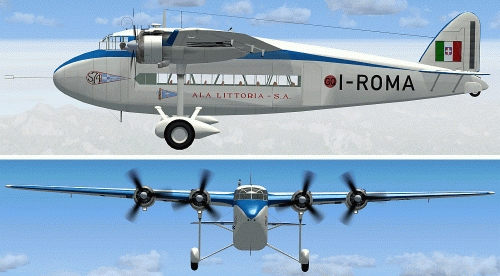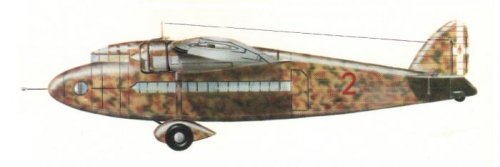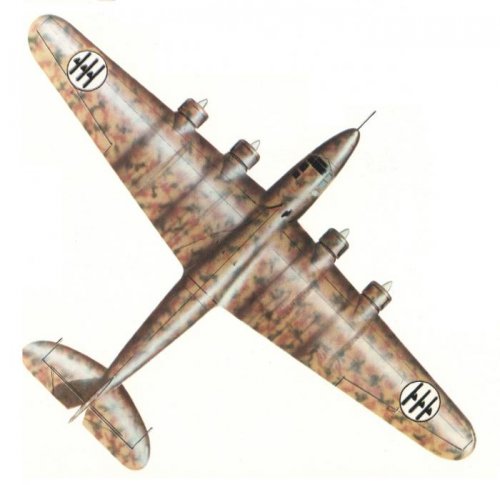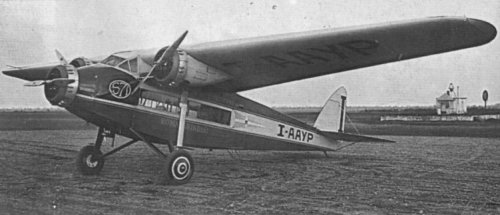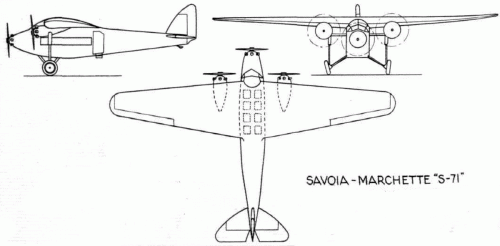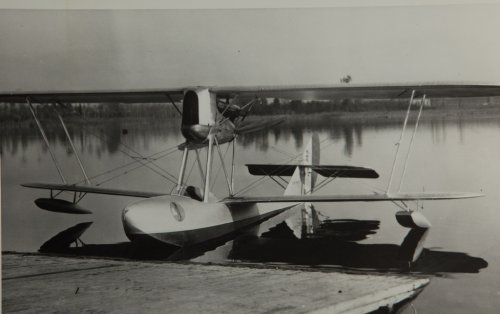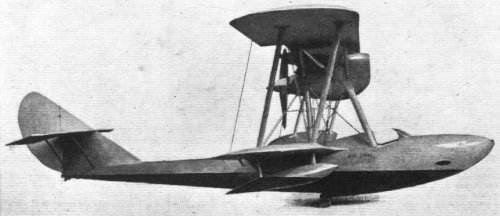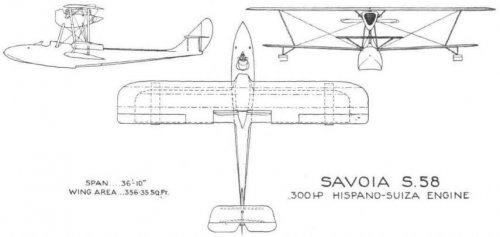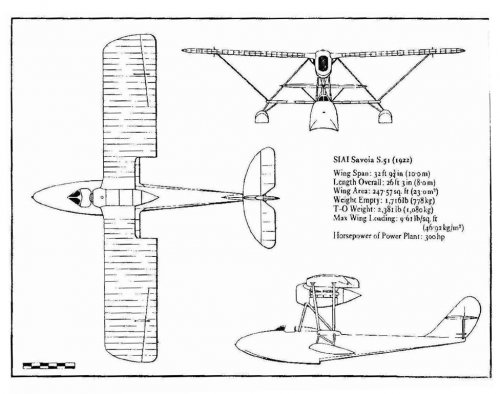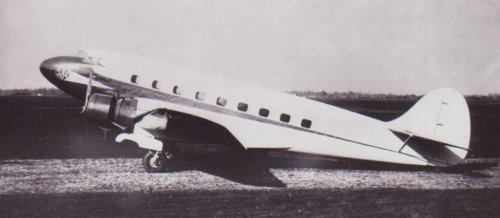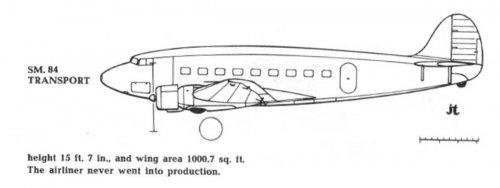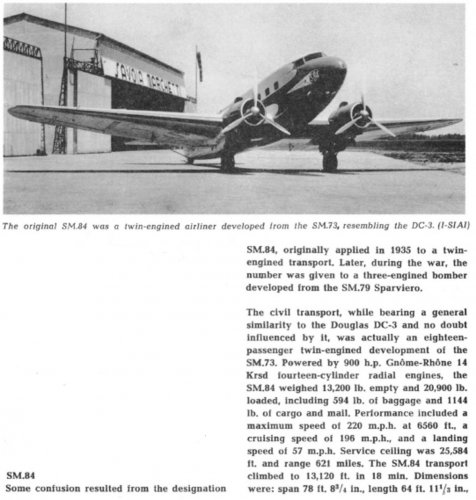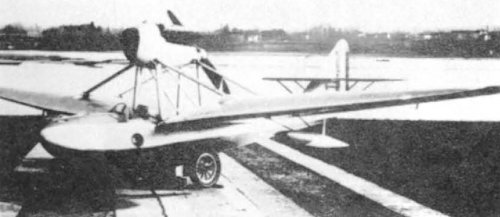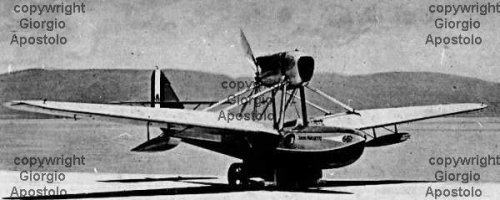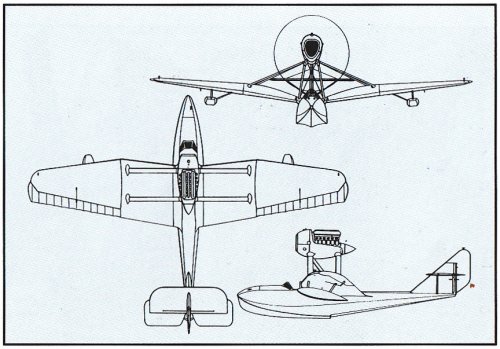You are using an out of date browser. It may not display this or other websites correctly.
You should upgrade or use an alternative browser.
You should upgrade or use an alternative browser.
Savoia-Marchetti project
- Thread starter Maveric
- Start date
Skybolt is very busy these days.
Therefore I hope he wont mind if I give it a try ;D
This 1939 project should be the SIAI-Marchetti S.M.88 .
A twin engined ,three seat light bomber version of the
S.M.91 three engined heavy fighter.
Therefore I hope he wont mind if I give it a try ;D
This 1939 project should be the SIAI-Marchetti S.M.88 .
A twin engined ,three seat light bomber version of the
S.M.91 three engined heavy fighter.
The illustration shows a 2- engined design.
It resembles strongly the twinboom S.M.88 project.
Only the engine gondola's are a bit different in the illustration shown by Maveric
The S.M.91 project was a 3-engined twinboom design.
The third engine was placed at the back of the crew module and drove a pusher prop.
The two other in front of the booms.
Source : Air International -March 1993 . page 157
It resembles strongly the twinboom S.M.88 project.
Only the engine gondola's are a bit different in the illustration shown by Maveric
The S.M.91 project was a 3-engined twinboom design.
The third engine was placed at the back of the crew module and drove a pusher prop.
The two other in front of the booms.
Source : Air International -March 1993 . page 157
When Italy entered WW II work on the S.M.88 was halted.
In 1942 on request of the Air Ministry development was restarted
and the design evolved into a 2-seat fighter-bomber prototype
redesignated SM 91.
In 1942 on request of the Air Ministry development was restarted
and the design evolved into a 2-seat fighter-bomber prototype
redesignated SM 91.
- Joined
- 14 June 2006
- Messages
- 2,297
- Reaction score
- 487
Here I am...
The image is of the Sm-88 (thanks Paul..), which was a 1939 export projects for a two-seat light bomber-reconnaissance aircraft. It was twin-engined (two DB-601 basically, even though other engine has been considered). Actually the version displayed was the second one, the first (from this on, I am relating new results from my research, will find them in my next book ) was a single boom, twin-tail, two-seat, one powered by two Gnome-Rhone or Walter Sagittas. Marchetti saw the Fokker G-1 at the 1938 Paris Salon and decided for a twin-boom design. BTW, the first SM-88 was originally called SM-86W (W for Walter...), and yes, it was an evolution of the SM-86 dive bomber....
Actually, the Sm-91 was only related to the Sm-88. The wing was different, although made of laminated wood in both cases, but was shorter (the project had a very high wing-load, in excess of 260 Kg/m2...). Naturally, Paul is right, Hesham: the original SM-91, submitted at the second round of the 1938-39 Caccia Combattimento (alongside with the famous IMAM Ro-67 and others) was a three engine with Db-601s (two tractor and one pusher), other engines considered, as the FIAT A-38, and was a heavy fighter with a secondary duty as fast light bomber (bombs under the wings). The Sm-91 was ordered as two prototypes, but the SM-88 too was ordered... one machine. Later, the SM-91 was first developed in a two-DB601 version (for lessening cost), then cancelled altogether (circa July 1941). The Sm-88 continued and divided in two versions (SM-88B for bomber, and SM-88D for Distruttore, zerstorer, self-explaining) and went on to DB-605 and an all metal construction (actually is more complicated, but I want to sell my book.. ;D ). Then, late 1942 the Sm-88B was cancelled (standard light bomber was to be the Cant-1018 Leone and Breda evolution, the BZ-301) and the SM-88D changed to SM-91, a two-DB-605 heavy fighter (seven 20-mm Mausers...) to attack dense bomber formation at day. The first SM-91 (new style) was so actually the SM-88 prototype. It flew first in March 1943 with the original long central nacelle. After a mishap, it was grounded and resumed flying in July 1943 with a shorter nacelle. This machine was weapon-less (and a "lot of other things" - less). A second prototype was started in early 1943 but completed only in early 1944. This was to be a day/night fighter (some tests were conducted in the night configuration even on the first prototype). It flew in spring-summer 1944 but was gravely damaged by an Allied incursion (strafing) on the Vergiate airport in December 1944. It was disposed of after the end of the war.
One more note, from July 1941 to October 1942 the SM-91 designation wasn't in use officially but SIAI Marchetti used it internally to designate... the various projects that led to the SM-93, but this is another story.
Satisfied ? 8) ;D
The image is of the Sm-88 (thanks Paul..), which was a 1939 export projects for a two-seat light bomber-reconnaissance aircraft. It was twin-engined (two DB-601 basically, even though other engine has been considered). Actually the version displayed was the second one, the first (from this on, I am relating new results from my research, will find them in my next book ) was a single boom, twin-tail, two-seat, one powered by two Gnome-Rhone or Walter Sagittas. Marchetti saw the Fokker G-1 at the 1938 Paris Salon and decided for a twin-boom design. BTW, the first SM-88 was originally called SM-86W (W for Walter...), and yes, it was an evolution of the SM-86 dive bomber....
Actually, the Sm-91 was only related to the Sm-88. The wing was different, although made of laminated wood in both cases, but was shorter (the project had a very high wing-load, in excess of 260 Kg/m2...). Naturally, Paul is right, Hesham: the original SM-91, submitted at the second round of the 1938-39 Caccia Combattimento (alongside with the famous IMAM Ro-67 and others) was a three engine with Db-601s (two tractor and one pusher), other engines considered, as the FIAT A-38, and was a heavy fighter with a secondary duty as fast light bomber (bombs under the wings). The Sm-91 was ordered as two prototypes, but the SM-88 too was ordered... one machine. Later, the SM-91 was first developed in a two-DB601 version (for lessening cost), then cancelled altogether (circa July 1941). The Sm-88 continued and divided in two versions (SM-88B for bomber, and SM-88D for Distruttore, zerstorer, self-explaining) and went on to DB-605 and an all metal construction (actually is more complicated, but I want to sell my book.. ;D ). Then, late 1942 the Sm-88B was cancelled (standard light bomber was to be the Cant-1018 Leone and Breda evolution, the BZ-301) and the SM-88D changed to SM-91, a two-DB-605 heavy fighter (seven 20-mm Mausers...) to attack dense bomber formation at day. The first SM-91 (new style) was so actually the SM-88 prototype. It flew first in March 1943 with the original long central nacelle. After a mishap, it was grounded and resumed flying in July 1943 with a shorter nacelle. This machine was weapon-less (and a "lot of other things" - less). A second prototype was started in early 1943 but completed only in early 1944. This was to be a day/night fighter (some tests were conducted in the night configuration even on the first prototype). It flew in spring-summer 1944 but was gravely damaged by an Allied incursion (strafing) on the Vergiate airport in December 1944. It was disposed of after the end of the war.
One more note, from July 1941 to October 1942 the SM-91 designation wasn't in use officially but SIAI Marchetti used it internally to designate... the various projects that led to the SM-93, but this is another story.
Satisfied ? 8) ;D
- Joined
- 30 November 2007
- Messages
- 1,098
- Reaction score
- 496
Dear Skybolt, please can you advise on the relationship between the SM.90 and the preceding SM.75, SM.76 & SM.82? The SM.90 appears to retain the longer nose fuselage of the later production SM.75 (also used for the SM.76 & SM.87), with SM.83-style HP slots on the wing leading edges and long-chord cowlings similar to those on the five Hungarian SM.75s with Gnome-Rhône 14K engines. However, the SM.90 appears to revert to the old style Savoia tail-fin, but with an even more rakish, almost quarter-circle chord shaped leading edge.......
Any details or advice would be most appreciated.
All best wishes, Terry, (Caravellarella).
Any details or advice would be most appreciated.
All best wishes, Terry, (Caravellarella).
- Joined
- 14 June 2006
- Messages
- 2,297
- Reaction score
- 487
Basically, all the mixed-construction late 30s - early 40s projects shared some traits. The wing was very similar, this deriving by the fact that it was made of laminated wood and so once a shape was considered good from a structural point of view it was repeated, scaled up and down as necessary. Another reasons was that SIAI hadn't an internal wind-tunnel faciliy, so they had to depend from Guidonia near-Roma (the archive is full of shipment documents to and from Guidonia), and the test made there were to be put in a queue with all other manufacturers's one. Alternatively, SIAI could use the Turin Polytechnic wind-tunnel, but they refrained because Turin was a FIAT feud. Third, all projects from this time period were conceived by Alessandro Marchetti, and so there is a strong "family-feeling" in every one of them. Marchetti was one of the bigger shareholder of the company and one of the two CEOs, so it was very cost-conscious (he made personally the calculation fro he price setting in public and private contracts, I have pages and pages of calculations by his hand, sysmographic script..).
blackkite
Don't laugh, don't cry, don't even curse, but.....
- Joined
- 31 May 2007
- Messages
- 8,597
- Reaction score
- 6,844
Hi! SM.74.
https://en.wikipedia.org/wiki/Savoia-Marchetti_S.74
http://www.alieuomini.it/catalogo/dettaglio_catalogo/savoia_marchetti_s,10.html
Engines: Piaggio P.x RC. (later Alfa Romeo 126)
Power: 4 x cv. 700
wingspan: 29.68 m.
overall length: m. 21.36
total height: 5.40 m.
wing area: sqm. 118.54
empty weight: kg. 9,600
maximum load weight: kg. 14,100
maximum speed: 325 km/h.
lifting time: 19 ' to 4,000 m.
Service ceiling: 6,000 m.
range: km. 2,000
crew: 4
passengers: 27
Designer: Alessandro Marchetti
test pilot: Alexander Palacios
first flight of the prototype: n/c. 21001 in November 1934
location: Cameri (Novara)
Which is the correct three side view drawing?
https://www.youtube.com/watch?v=_VKLSTh7GC0
https://en.wikipedia.org/wiki/Savoia-Marchetti_S.74
http://www.alieuomini.it/catalogo/dettaglio_catalogo/savoia_marchetti_s,10.html
Engines: Piaggio P.x RC. (later Alfa Romeo 126)
Power: 4 x cv. 700
wingspan: 29.68 m.
overall length: m. 21.36
total height: 5.40 m.
wing area: sqm. 118.54
empty weight: kg. 9,600
maximum load weight: kg. 14,100
maximum speed: 325 km/h.
lifting time: 19 ' to 4,000 m.
Service ceiling: 6,000 m.
range: km. 2,000
crew: 4
passengers: 27
Designer: Alessandro Marchetti
test pilot: Alexander Palacios
first flight of the prototype: n/c. 21001 in November 1934
location: Cameri (Novara)
Which is the correct three side view drawing?
https://www.youtube.com/watch?v=_VKLSTh7GC0
Attachments
blackkite
Don't laugh, don't cry, don't even curse, but.....
- Joined
- 31 May 2007
- Messages
- 8,597
- Reaction score
- 6,844
blackkite
Don't laugh, don't cry, don't even curse, but.....
- Joined
- 31 May 2007
- Messages
- 8,597
- Reaction score
- 6,844
Hi! SM.55 and SM.66.
Sorry for off topic. These aircraft were mass production model.
SM.55 Number built : 243+
https://en.wikipedia.org/wiki/Savoia-Marchetti_S.55
SM.66 Number built : 24
https://en.wikipedia.org/wiki/Savoia-Marchetti_S.66
https://www.youtube.com/watch?v=KfiU334Nog4
https://vimeo.com/105116219
https://www.youtube.com/watch?v=xF7qQKYzydU
http://www.alieuomini.it/catalogo/dettaglio_catalogo/savoia_marchetti_s,80.html
Sorry for off topic. These aircraft were mass production model.
SM.55 Number built : 243+
https://en.wikipedia.org/wiki/Savoia-Marchetti_S.55
SM.66 Number built : 24
https://en.wikipedia.org/wiki/Savoia-Marchetti_S.66
https://www.youtube.com/watch?v=KfiU334Nog4
https://vimeo.com/105116219
https://www.youtube.com/watch?v=xF7qQKYzydU
http://www.alieuomini.it/catalogo/dettaglio_catalogo/savoia_marchetti_s,80.html
Attachments
-
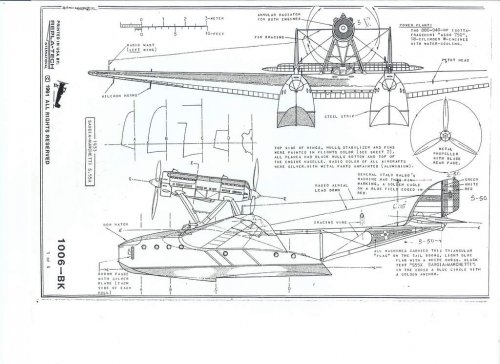 SM55X 3-VIEW SIDE REPLA-TEC.jpg98.8 KB · Views: 121
SM55X 3-VIEW SIDE REPLA-TEC.jpg98.8 KB · Views: 121 -
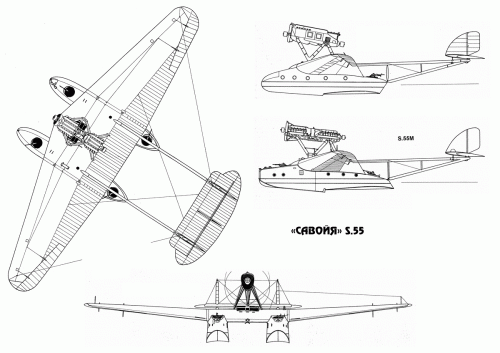 s55-1.gif188.7 KB · Views: 108
s55-1.gif188.7 KB · Views: 108 -
 s66b,3835.jpg10 KB · Views: 73
s66b,3835.jpg10 KB · Views: 73 -
 s66c,3837.jpg20.8 KB · Views: 67
s66c,3837.jpg20.8 KB · Views: 67 -
 s66a,3833.jpg15.4 KB · Views: 74
s66a,3833.jpg15.4 KB · Views: 74 -
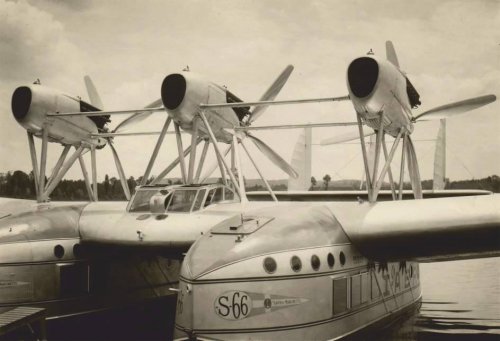 S_66.jpg53.1 KB · Views: 72
S_66.jpg53.1 KB · Views: 72 -
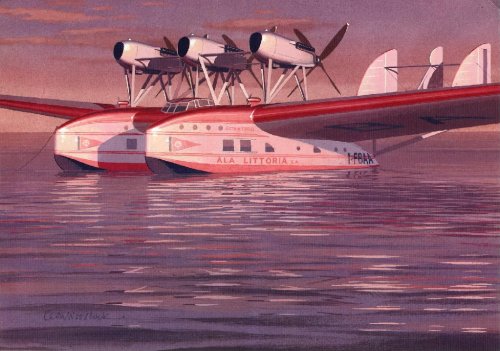 Savoia_S-66.jpg221.8 KB · Views: 68
Savoia_S-66.jpg221.8 KB · Views: 68 -
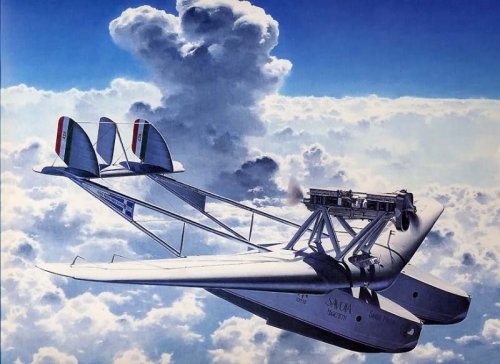 TW004-05.jpg85.1 KB · Views: 65
TW004-05.jpg85.1 KB · Views: 65 -
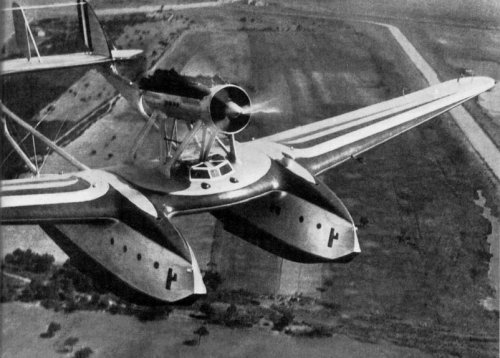 SM.55.jpg72 KB · Views: 65
SM.55.jpg72 KB · Views: 65 -
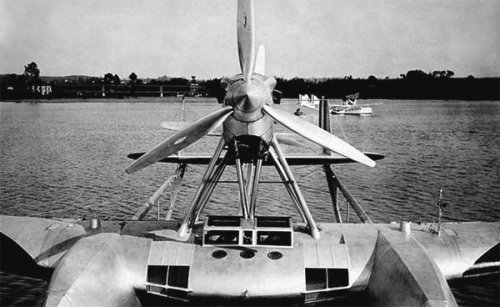 S.55 prototype.jpg57.1 KB · Views: 66
S.55 prototype.jpg57.1 KB · Views: 66
blackkite
Don't laugh, don't cry, don't even curse, but.....
- Joined
- 31 May 2007
- Messages
- 8,597
- Reaction score
- 6,844
Hi S.64 record breaker.
Which is the correct side view drawing? ;D
https://en.wikipedia.org/wiki/Savoia-Marchetti_S.64
"On 31 May 1928, Arturo Ferrarin and Carlo del Prete broke three world records in the S.64 by making 51 round trips between Torre Flavia (in Ladispoli) and Anzio. When they landed on 3 June, they had covered 7,666 km (4,791 mi) – a new world distance record over a closed circuit – and stayed aloft for 58 hours 34 minutes – a new world endurance record. Moreover, they also set the world record for top speed over a distance of 5,000 km (3,110 mi) of 139 km/h (87 mph). With the record attempt successfully concluded, an announcement was made that this was to be a proving exercise for a Rome–New York transatlantic flight."
http://www.airwar.ru/enc/cw1/s64.html
http://www.rcgroups.com/forums/showthread.php?t=2072935
https://oldmachinepress.com/2014/04/14/savoia-marchetti-s-64-and-s-64-bis/
http://fondoluce.archivioluce.com/LuceUnesco/reparto-attualita/scheda/foto/IL0000034261/12/Umberto-Maddalena-in-posa-davanti-allaereo.html?persone=Maddalena,%20Umberto
Which is the correct side view drawing? ;D
https://en.wikipedia.org/wiki/Savoia-Marchetti_S.64
"On 31 May 1928, Arturo Ferrarin and Carlo del Prete broke three world records in the S.64 by making 51 round trips between Torre Flavia (in Ladispoli) and Anzio. When they landed on 3 June, they had covered 7,666 km (4,791 mi) – a new world distance record over a closed circuit – and stayed aloft for 58 hours 34 minutes – a new world endurance record. Moreover, they also set the world record for top speed over a distance of 5,000 km (3,110 mi) of 139 km/h (87 mph). With the record attempt successfully concluded, an announcement was made that this was to be a proving exercise for a Rome–New York transatlantic flight."
http://www.airwar.ru/enc/cw1/s64.html
http://www.rcgroups.com/forums/showthread.php?t=2072935
https://oldmachinepress.com/2014/04/14/savoia-marchetti-s-64-and-s-64-bis/
http://fondoluce.archivioluce.com/LuceUnesco/reparto-attualita/scheda/foto/IL0000034261/12/Umberto-Maddalena-in-posa-davanti-allaereo.html?persone=Maddalena,%20Umberto
Attachments
-
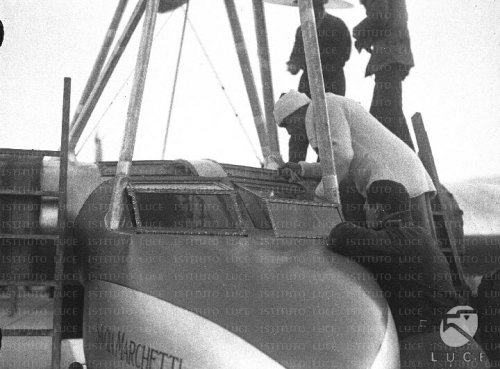 A00015639.jpg71.6 KB · Views: 68
A00015639.jpg71.6 KB · Views: 68 -
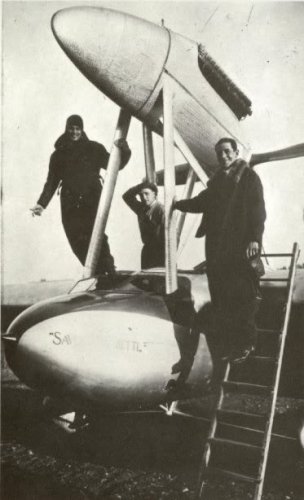 S64close.jpg33.6 KB · Views: 65
S64close.jpg33.6 KB · Views: 65 -
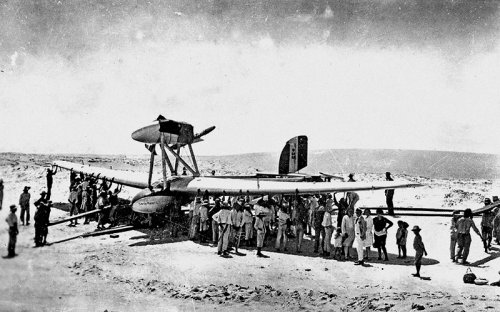 savoia-marchetti-s64-brazil.jpg183.9 KB · Views: 81
savoia-marchetti-s64-brazil.jpg183.9 KB · Views: 81 -
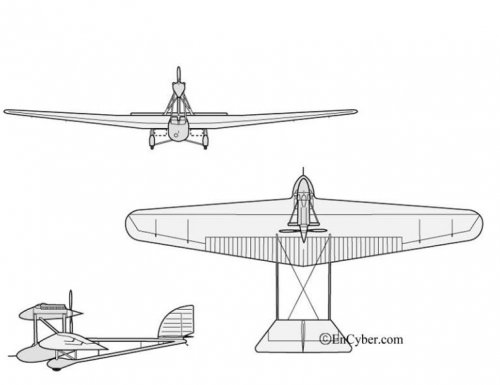 Savoia_Marchetti_SM64_1.jpg30 KB · Views: 96
Savoia_Marchetti_SM64_1.jpg30 KB · Views: 96 -
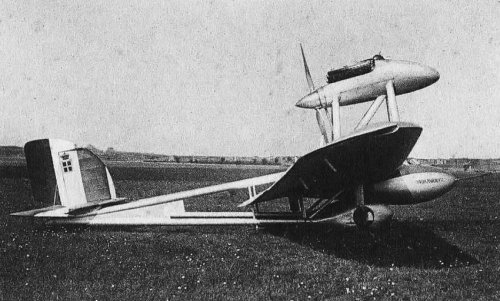 s64-3.jpg105.3 KB · Views: 450
s64-3.jpg105.3 KB · Views: 450 -
 s64-6.jpg55.6 KB · Views: 452
s64-6.jpg55.6 KB · Views: 452 -
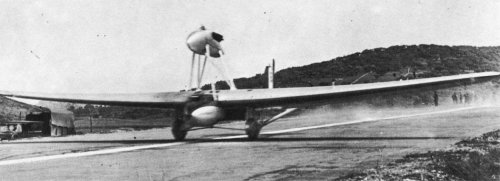 s64-7.jpg62.1 KB · Views: 469
s64-7.jpg62.1 KB · Views: 469 -
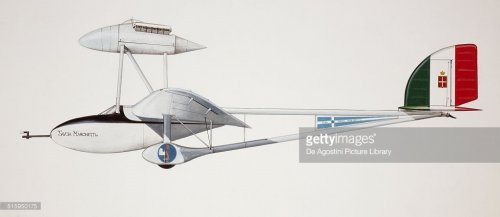 515950175.jpg94.3 KB · Views: 498
515950175.jpg94.3 KB · Views: 498 -
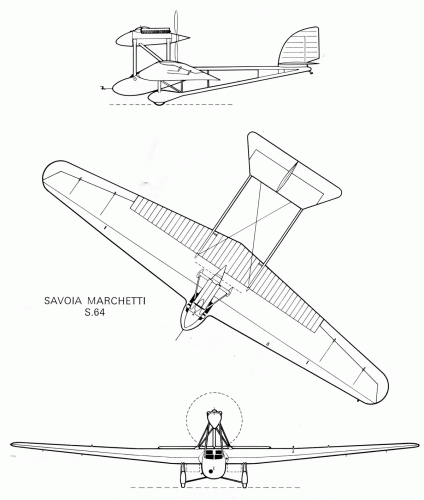 s64-1.gif336.4 KB · Views: 529
s64-1.gif336.4 KB · Views: 529
blackkite
Don't laugh, don't cry, don't even curse, but.....
- Joined
- 31 May 2007
- Messages
- 8,597
- Reaction score
- 6,844
Hi! S.58. Cockpit looks like S.51.
https://en.wikipedia.org/wiki/SIAI_S.58
The SIAI S.58 or Savoia-Marchetti S.M.58 was an Italian flying boat fighter prototype of the 1920s designed and manufactured by SIAI.
http://aviadejavu.ru/Site/Crafts/Craft32811.htm
https://en.wikipedia.org/wiki/SIAI_S.58
The SIAI S.58 or Savoia-Marchetti S.M.58 was an Italian flying boat fighter prototype of the 1920s designed and manufactured by SIAI.
http://aviadejavu.ru/Site/Crafts/Craft32811.htm
Attachments
blackkite
Don't laugh, don't cry, don't even curse, but.....
- Joined
- 31 May 2007
- Messages
- 8,597
- Reaction score
- 6,844
Hi! SM.84 twin engine transport developped from SM.73 transport.
Source : Italian-Civil-and-Military-Aircraft-1930-1945
SM.73 video.
https://www.youtube.com/watch?v=pduWHLUYmHs
Source : Italian-Civil-and-Military-Aircraft-1930-1945
SM.73 video.
https://www.youtube.com/watch?v=pduWHLUYmHs
Attachments
blackkite
Don't laugh, don't cry, don't even curse, but.....
- Joined
- 31 May 2007
- Messages
- 8,597
- Reaction score
- 6,844
Hi SM.80 and SM.80bis
https://en.wikipedia.org/wiki/Savoia-Marchetti_SM.80
https://it.wikipedia.org/wiki/Savoia-Marchetti_S.80
http://www.airplane-pictures.net/type.php?p=6278
http://www.baronerosso.it/forum/2375485-post1.html
http://www.paviaedintorni.it/temi/sguardo_nel_passato/curiosita_file/attivita_idroscalo.htm
The Savoia-Marchetti SM.80 was a two-seat monoplane amphibian tourer, with a single, tractor engine mounted above the wing, designed in Italy in the early 1930s. The SM.80bis was a four-seat variant, powered by two pusher engines.
I can see wing root bulge in bottom No.8 and No.9 picture.(Removable bulge?)
https://en.wikipedia.org/wiki/Savoia-Marchetti_SM.80
https://it.wikipedia.org/wiki/Savoia-Marchetti_S.80
http://www.airplane-pictures.net/type.php?p=6278
http://www.baronerosso.it/forum/2375485-post1.html
http://www.paviaedintorni.it/temi/sguardo_nel_passato/curiosita_file/attivita_idroscalo.htm
The Savoia-Marchetti SM.80 was a two-seat monoplane amphibian tourer, with a single, tractor engine mounted above the wing, designed in Italy in the early 1930s. The SM.80bis was a four-seat variant, powered by two pusher engines.
I can see wing root bulge in bottom No.8 and No.9 picture.(Removable bulge?)
Attachments
-
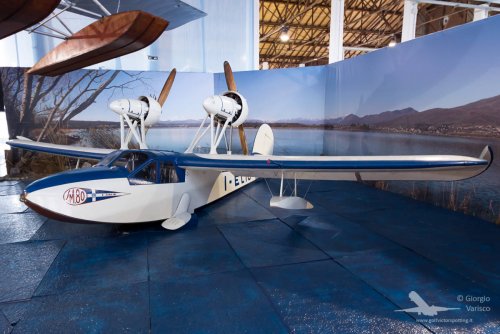 _MG_9998_131215.jpg149.8 KB · Views: 85
_MG_9998_131215.jpg149.8 KB · Views: 85 -
 4609L.jpg76 KB · Views: 64
4609L.jpg76 KB · Views: 64 -
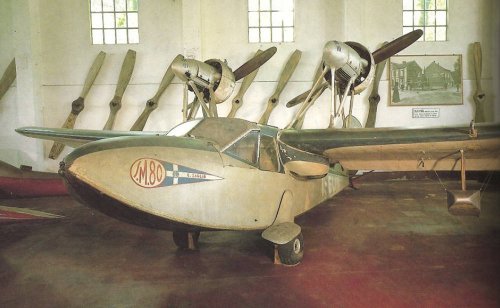 SM.80 bis picture 2.jpg83.9 KB · Views: 61
SM.80 bis picture 2.jpg83.9 KB · Views: 61 -
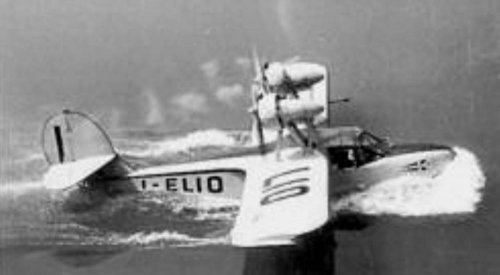 SM.80 bis picture.jpg34.7 KB · Views: 60
SM.80 bis picture.jpg34.7 KB · Views: 60 -
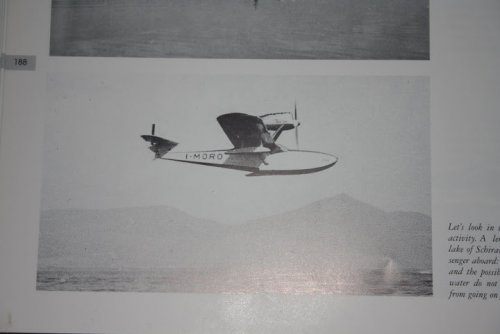 IMG_3757.JPG43.5 KB · Views: 61
IMG_3757.JPG43.5 KB · Views: 61 -
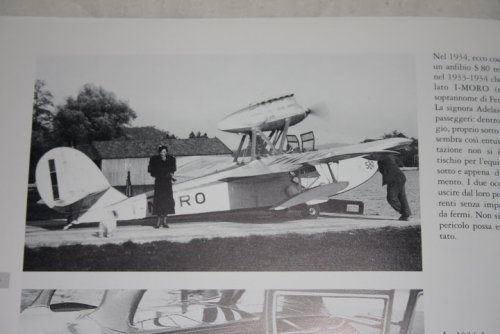 IMG_3759.JPG66.2 KB · Views: 59
IMG_3759.JPG66.2 KB · Views: 59 -
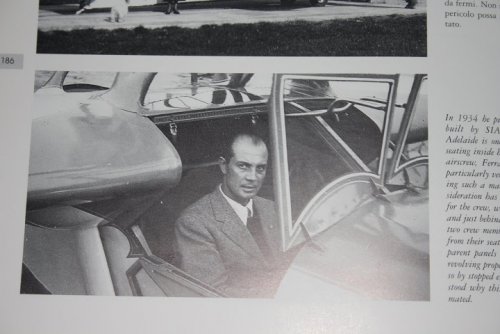 IMG_3760.JPG84.4 KB · Views: 59
IMG_3760.JPG84.4 KB · Views: 59 -
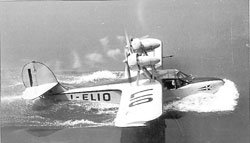 Savoia-Marchetti-SM80-1.jpeg8.1 KB · Views: 337
Savoia-Marchetti-SM80-1.jpeg8.1 KB · Views: 337 -
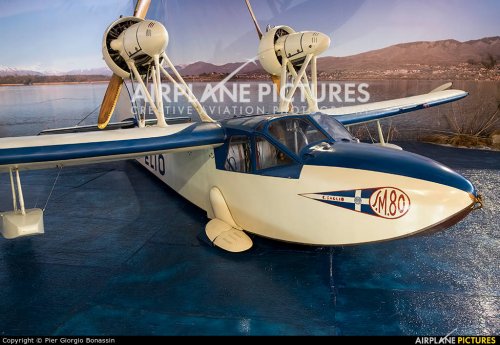 SM.80 bis.jpg144.9 KB · Views: 69
SM.80 bis.jpg144.9 KB · Views: 69 -
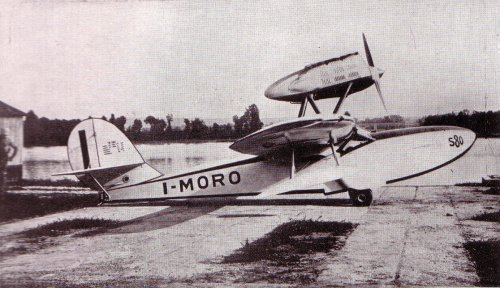 SM.80.jpg346.6 KB · Views: 66
SM.80.jpg346.6 KB · Views: 66
blackkite
Don't laugh, don't cry, don't even curse, but.....
- Joined
- 31 May 2007
- Messages
- 8,597
- Reaction score
- 6,844
D
Deleted member 4286
Guest
Information n`on SM92 and then (!) SM91 from the wonderful Italian blog SVPPBHallo all - especially Skybolt -,
anybody of you know this Savoia-Marchetti twin boom fighter?
Source: FlightArchive
Servus Maveric
SI VIS PACEM, PARA BELLUM
Similar threads
-
-
-
Savoia-Marchetti S.60 Twin Boom Bomber Project
- Started by hesham
- Replies: 8
-
-
Savoia-Marchetti pre war aircraft search
- Started by Maveric
- Replies: 19

